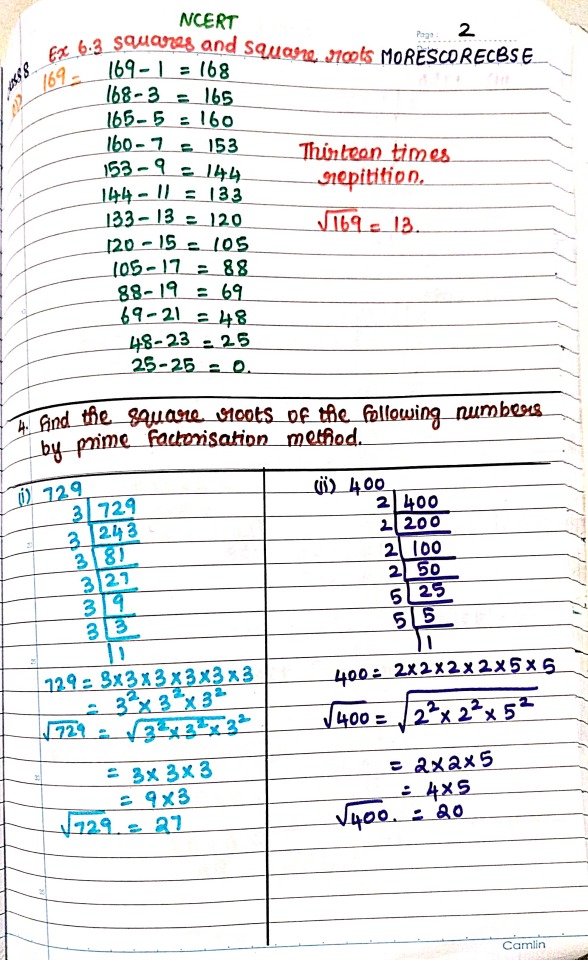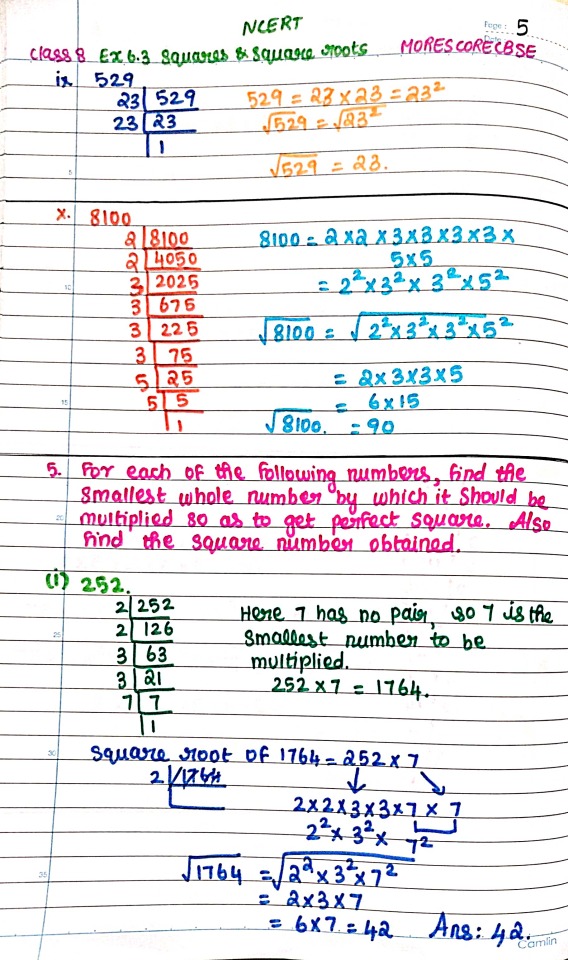#Class 7 Maths NCERT Solutions
Text
Get solutions to all NCERT exercise questions and examples of class 7 Maths free at the teacher. Our experts will provide step-by-step instructions on how to complete different types of math problems in easy methods.
6 notes
·
View notes
Text
Unlocking the World of Mathematics: NCERT Solutions for Class 7

In the realm of education, a solid foundation in mathematics is paramount. It serves as a gateway to understanding complex concepts, problem-solving skills, and critical thinking abilities. For students embarking on their journey through Class 7, mastering mathematics becomes even more crucial. Fortunately, the National Council of Educational Research and Training (NCERT) offers a comprehensive resource to aid in this endeavor: NCERT Solutions for Class 7 Maths.
Understanding NCERT Solutions:
NCERT Solutions are meticulously crafted to align with the curriculum prescribed by the Central Board of Secondary Education (CBSE). They serve as a roadmap, guiding students through each chapter, elucidating concepts, and providing step-by-step solutions to exercises and problems presented in the NCERT textbooks.
Comprehensive Coverage: NCERT Solutions for Class 7 Maths cover all the chapters included in the CBSE syllabus. From integers and fractions to algebraic expressions and geometry, each topic is dissected into manageable sections, ensuring holistic understanding.
Clarity of Concepts: One of the standout features of NCERT Solutions is their ability to simplify complex mathematical concepts. Each solution is presented in a clear and concise manner, supplemented with illustrations, diagrams, and real-life examples, making abstract ideas tangible and relatable.
Step-by-Step Approach: Mathematics is a subject that demands logical reasoning and systematic problem-solving skills. NCERT Solutions follow a step-by-step approach, breaking down problems into sequential steps. This methodology not only enhances comprehension but also cultivates analytical thinking among students.
Practice Makes Perfect: The inclusion of numerous exercises and practice questions in NCERT Solutions enables students to reinforce their learning. From basic problems to challenging exercises, each question is designed to progressively enhance students' proficiency and confidence in tackling mathematical problems.
Self-Assessment and Evaluation: NCERT Solutions offer a valuable tool for self-assessment. Students can gauge their understanding of concepts by attempting the exercises independently and then verifying their solutions with the provided answers. This process fosters a sense of accountability and autonomy in their learning journey.
Benefits of NCERT Solutions:
Alignment with Curriculum: NCERT Solutions are specifically designed to complement the CBSE curriculum, ensuring seamless integration into classroom learning.
Accessibility: NCERT Solutions are readily available both in print and digital formats, making them accessible to students across diverse socioeconomic backgrounds.
Cost-Effective: As NCERT Solutions are published by the government, they are affordable and accessible to all students, eliminating financial barriers to quality education.
Reliable Resource: NCERT Solutions are authored by subject matter experts, guaranteeing accuracy and reliability in content delivery.
Holistic Development: By fostering conceptual clarity and problem-solving skills, NCERT Solutions contribute to the holistic development of students, preparing them for academic success and real-world challenges.
In conclusion, the journey through Class 7 mathematics is not merely about solving equations or mastering formulas; it's about building a solid foundation for future academic pursuits and real-world applications. NCERT Solutions for Class 7 Maths, in conjunction with resources like Tiwari Academy, serve as beacons of guidance, illuminating the path towards mathematical proficiency and holistic development.
0 notes
Text
Cbse class 8 NCERT chapter 6 squares and square roots solved problems. Check out the link to download the free pdf




#education#notes#school#youtube#studyblr#students#homeschool#latitudes#maths#maths tutoring#math rock#math#mathematics#math blr#math teacher#math tricks#math tips#math tutor#math test#math tuition#study study study#study hard#study motivation#college studyblr#new studyblr#study aesthetic#study blog#study inspiration#study inspo#study notes
9 notes
·
View notes
Video
Integrals NCERT Chapter 7 Exercise 7.4 | Integration Class 12 - MathYug
Detailed explanation of questions related to NCERT Solutions for Exercise 7.4 (Q1 & Q9) of Integrals Class 12 Maths Chapter 7.
Main Website: https://mathyug.com
Mathyug is an online education platform focussed to strengthen your mathematical skills and allows you to deepen your knowledge by studying independently.
#youtube#integrals#integration#integration class 12#mathematics#class 12 maths#ncert solutions#mathyug
2 notes
·
View notes
Text
1 note
·
View note
Link
Integrals NCERT Solutions Class 12 Maths Chapter 7 Exercise 7.1 7.2 7.3 7.4 7.5 7.6 7.7 7.8 7.9 7.10 7.11 Miscellaneous Free pdf Notes Study Material download-Anand Classes
0 notes
Text
Mastering Permutations and Combinations - A Key Part of NCERT Class 11 Maths
Permutations and combinations form an important part of the NCERT syllabus for Class 11 Maths. This topic is covered in Chapter 7 - Permutations & Combinations, under the Algebra section. Having a strong grasp of permutations and combinations is essential for competitive exams like JEE, CBSE 12th boards, and more. In this blog, we will explore this topic in-depth.

Understanding Basic Definitions and Principles
Permutations refer to arranging objects in a definite order. For example, the permutations of ABC are ABC, ACB, BAC, BCA, CAB, CBA.
Combinations refer to selecting objects without regard to order. For instance, combinations of ABC are ABC, AB, AC, BC.
The fundamental principles include factorial notation, permutation and combination formulas, and the fundamental principle of counting.
NCERT solutions provide step-by-step techniques for applying these basic definitions and formulas to solve questions.
Using Permutations and Combinations Formulas
Some key formulas students should remember include:
Permutations of n objects taken r at a time: nPr = n!/(n-r)!
Combinations of n objects taken r at a time: nCr = n!/r!(n-r)!
Permutations with repetitions like AAAABC: n^r
Combinations with repetitions like ABCABC: (n+r-1)Cr
Solving a variety of examples from NCERT textbooks will help students master these formulas.
Understanding Properties and Applications
Some important properties and applications covered in this chapter are:
Circular permutations
Combinations of multi-stage selections
Applications in probability
Occupancy problems
Arrangements of letters to form words
Practicing questions on these applications is vital for gaining comprehensive understanding.
Tips for Solving Permutation and Combination Problems
Some useful tips for solving these problems include:
Write down all key information given in the question
Figure out if it involves permutations or combinations
Determine the objects being arranged/selected
Identify which formula applies and substitute the values
Preparing Well for Permutations/Combinations Questions
To summarize, students should thoroughly study the NCERT 11 maths solutions for this chapter. Solving examples, intext questions, chapter exercises and NCERT book class 11 exercises will ensure full preparation. Permutations and combinations serve as a foundation for competitive exams, so dedicate ample time to master this topic.
FAQs about Permutations and Combinations
Q1. What is the permutation formula for n objects taken r at a time?
A1. The permutation formula is nPr = n! / (n-r)! where n is total objects and r is objects being permuted.
Q2. How is a combination different from a permutation?
A2. A combination only considers which objects are selected, while a permutation considers their ordered arrangement.
Q3. What are some real-world applications of permutations and combinations?
A3. Applications include finding probabilities, forming words, combinations of passwords, committees selection, etc.
Q4. How do you solve problems involving permutations/combinations with repetitions?
A4. Use formulas like n^r for permutations with repetition and (n+r-1)Cr for combinations with repetition.
Q5. What are some common mistakes students make with these concepts?
A5. Common mistakes include confusing permutations and combinations, choosing wrong formula, incorrectly substituting values in formula.
#NCERT Solutions For Class 11 maths#ncert class 11 maths solutions#ncert 11 maths solutions#ncert maths class 11 pdf#ncert 11 maths#ncert solutions for class 11 maths pdf
0 notes
Text
NCERT Solutions for Class 12 Maths Chapter 7 Integrals
0 notes
Text
Q7 Exercise1.1 I Class 12 Maths NCERT Chapter 1 Relations and Functions | NCERT solutions
NCERT Class 12Chapter: Relations and FunctionsExercise 1.1Question 7: Show that the relation R in the set A of all the books in a library of a college, given by R = {(x, y) : x and y have same number of pages} is an equivalence relation.
youtube
View On WordPress
#equivalence#equivalence relation#equivalence relation class 12#equivalence relations#reflexive#reflexive relation#reflexive relation class 12#reflexive symmetric transitive relations#reflexive symmetric transitive relations class 12#reflexive symmetric transitive relations examples#reflexive symmetric transitive relations in hindi#relations and functions class 12#symmetric#symmetric relation#transitive#transitive relation#Youtube
0 notes
Text
0 notes
Text
0 notes
Text
0 notes
Text
0 notes
Text
Cbse class 7 Geography air Composition and Structure handnotes for kids to easily study and score more Check the link to download the free pdf



#education#notes#school#youtube#studyblr#students#homeschool#latitudes#maths#maths tutoring#climate#weather#season#atmosphere#stydyblr#college studyblr#new studyblr#study blog#studyspo#study aesthetic#study inspo#study inspiration#studyblr community#studygram#study motivation#study with me#studyinspo#studystudystudy#studyspiration#studywithme
11 notes
·
View notes
Text
Class 12 Maths Exercise 1.1 | Relations and Functions - MathYug
Delve into the realm of Relations and Functions in Class 12 Maths with MathYug's expert teacher Ashish Kumar, fondly known as Agam Sir. In this comprehensive video lecture, we unravel the complexities of NCERT Exercise 1.1, exploring empty relations, universal relations, and more.
youtube
Timestamps:
00:00:05 Introduction and How Ashish Sir is going to teach you Class 12 Maths on MathYug
00:06:37 Empty Relations and Universal Relations (Trivial Relations) Lecture 1 (NCERT Exercise 1.1, NCERT Exemplar, Board’s Question Bank)
00:12:27 Question 1 Let R be the relation in the set N given by R = {(a, b) : a = b – 2, b ≥ 6}. Choose the correct answer. A. (2, 4) ∈ R B. (3, 8) ∈ R C. (6, 8) ∈ R D. (8, 7) ∈ R (N)
00:15:17 Question 2 Let A= {1, 2, 3,} and define R = {(a, b): a – b = 12}. Show that R is an empty relation on Set A. (B)
00:17:47 Question 3 Let A be the set of all students of a boy’s school. Show that the relation R in A given by R = {(a, b) : a is the sister of b} is the empty relation and R′ = {(a, b) : the difference between the heights of a and b is less than 3 meters} is the universal relation. (N)
00:28:17 Question 4 If A is the set of students of a school then write, which of the following relations are Universal, Empty, or neither of the two. R1 = {(a, b) : a, b are ages of students and |a – b| > 0} R2 = {(a, b) : a, b are weights of students, and |a – b| > 0} R3 = {(a, b) : a, b are students studying in the same class} (B)
00:40:47 Question 5 Let A = {1, 2, 3,} and define R = {(a, b): a + b < 0}. Show that R is a universal relation on set A. (B)
Join us as we embark on a journey to master Class 12 Maths, guided by Agam Sir's expertise.
#mathyug#class 12 maths#relations and functions#mathematics#video lecture#ashish sir#agam sir#ashish kumar#relations and functions class 12#Youtube
0 notes
Text
0 notes